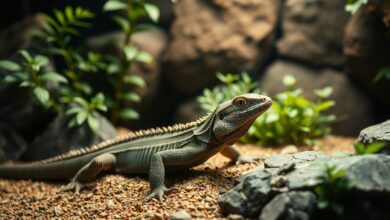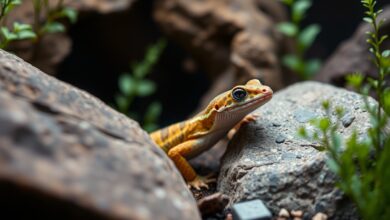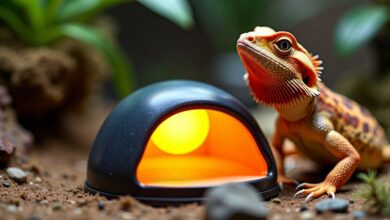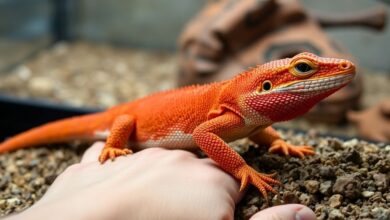Blue Eyed Lucy Ball Python – 10 Unique Features
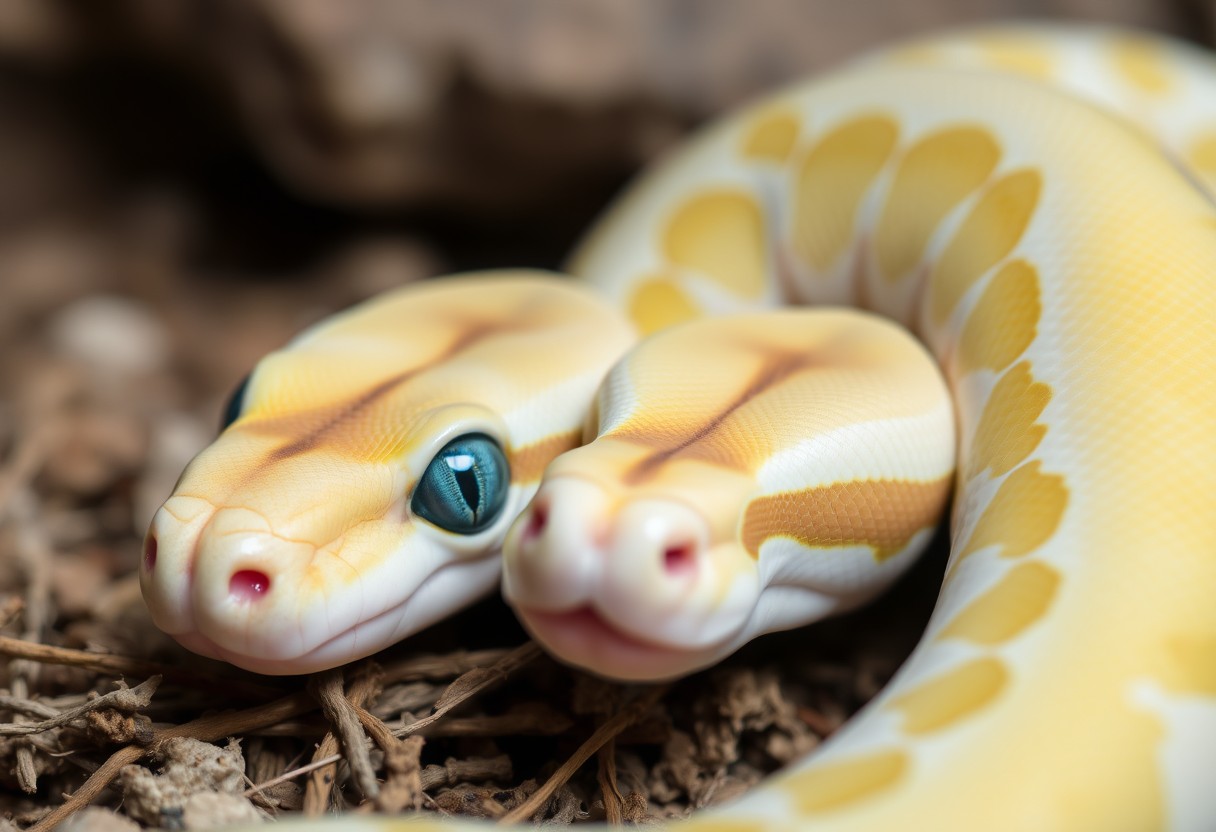
Blue is not just a color; it’s a distinctive trait of the beautiful Blue Eyed Lucy Ball Python. As a keeper or enthusiast, you’ll discover that these stunning snakes possess unique features that set them apart in the reptile world. From their stunning appearance to their gentle temperament, you’ll find yourself captivated by what makes these pythons both a beloved pet and a fascinating specimen. Dive into our list, and uncover the top 10 unique features that make the Blue Eyed Lucy an outstanding choice for your next reptilian companion.
Key Takeaways:
- Rare Coloration: The Blue Eyed Lucy Ball Python is recognized for its striking all-white body paired with bright blue eyes, making it a highly sought-after morph among reptile enthusiasts.
- Genetic Traits: This morph is the result of a unique combination of genetic traits, specifically the leucistic gene, which affects pigmentation and results in a lack of color while retaining the blue eyes.
- Temperament: Blue Eyed Lucy Ball Pythons are typically known for their calm and docile temperament, making them excellent pets for both beginners and experienced snake keepers.
Distinctive Blue Eyes
While blue eyes are a striking characteristic of the Lucy ball python, they also serve as a fascinating feature that sets them apart from other morphs. The unique coloration is not just aesthetically pleasing but can be a reflection of their overall health and vitality. This distinctive trait can enchant both enthusiasts and pet owners, making the Lucy ball python a popular choice among snake lovers.
Unique Color Trait
Assuming you are familiar with ball python morphs, the blue eyes of the Lucy ball python stand out as a remarkable color trait. This rare hue is not commonly found in other species, making it a prized attribute among breeders and collectors alike. Its allure lies not only in its beauty but also in the rarity of this unique melanin alteration.
Genetic Mutation
To understand the blue eyes of the Lucy ball python, you must explore the genetic mutation responsible for this rare feature. It results from a specific genetic anomaly that affects the pigmentation in the snake’s eyes, leading to the striking blue appearance that captures the attention of reptile enthusiasts. This mutation is a result of a recessive gene, which is why breeding for this trait can be more challenging but rewarding.
Color retention and production in blue-eyed Lucy ball pythons depend heavily on selective breeding. The genetic mutation responsible for their eye color can also influence other traits, making it crucial for breeders to understand lineage. While blue eyes are a beautiful sight, they can be associated with other possible health issues, so it’s crucial to source your python from reputable breeders who prioritize the overall well-being of their reptiles. Proper care and attention to their unique genetics can result in a stunning and healthy companion.

Attractive Pattern
Some enthusiasts are drawn to the Blue Eyed Lucy Ball Python because of its extraordinary and attractive pattern. This morph features a stunning blend of colors and markings that make it stand out from more common ball pythons. With a captivating layout, the Blue Eyed Lucy showcases a unique appearance that many reptile collectors find irresistible.
High Contrast
Now, this remarkable morph displays a high contrast between its white body and deep, rich colors. The stark difference creates an eye-catching effect, making it a favorite among snake enthusiasts. The bold coloration enhances the overall aesthetics, contributing to its desirability in the pet trade.
Striking Visuals
Little do many realize that the Blue Eyed Lucy is not only visually stunning but also brings an artistic flair to your collection. Its immaculate pattern combines both simplicity and elegance, making it a standout feature when displayed. These qualities add to its charm, allowing it to capture the attention of anyone who lays eyes on it.
It is important to recognize that the striking visuals of the Blue Eyed Lucy Ball Python stem from its peculiar genetic makeup, resulting in a beautiful contrast of colors and patterns. You will appreciate how its clean, white body is dappled with varying shades, adding depth to its appearance. Additionally, the way the light interacts with its scales creates a shimmer that enhances its appeal, ensuring that this morph is not just a pet but a centerpiece in your collection. The beauty of the Blue Eyed Lucy can, indeed, become a conversation starter among fellow enthusiasts.
Docile Temperament
Now, you’ll find that the Blue Eyed Lucy Ball Python is renowned for its docile temperament, making it an ideal pet for both beginners and experienced snake enthusiasts. These snakes are typically calm and easygoing, which makes handling them a smooth experience. Their inherent nature allows you to interact with them confidently, as they are less likely to react defensively, promoting a harmonious bond between you and your pet.
Friendly Nature
Now, this species is also characterized by its friendly nature. You’ll likely enjoy their laid-back disposition, which makes them pleasant companions. These pythons tend to accept handling without stress, allowing for enjoyable interactions that can strengthen your connection with them. Their affectionate behavior enhances the experience of snake ownership, giving you a sense of companionship.
Easy to Handle
Temperament plays a critical role in the handling of your Blue Eyed Lucy Ball Python, as its gentle and calm demeanor makes it particularly easy to handle. This is an important factor, especially for those new to snake keeping, as their relaxed nature helps ease your worries when interacting with them.
For instance, when you take the time to handle your snake regularly, you’ll find that it becomes increasingly comfortable and adaptable to your touch. This consistent interaction is vital, as it promotes trust between you and your python. Additionally, the Blue Eyed Lucy maintains a low level of aggression, allowing you to handle it without the concerns commonly associated with more temperamental species. By providing a calm environment and frequent, gentle handling, you can enjoy a fulfilling relationship that benefits both you and your exotic companion.
Ideal Pet Size
After considering your space and living arrangements, you’ll find that the Blue Eyed Lucy Ball Python is an ideal pet size for many reptile enthusiasts. Their moderate dimensions make them suitable for both beginners and seasoned keepers alike. Typically, they grow to a manageable length and weight, allowing you to provide an appropriate habitat without overwhelming your living area.
Moderate Length
You’ll appreciate that Blue Eyed Lucy Ball Pythons generally reach a length of 3 to 4 feet, making them a desirable size for a pet snake. This length is not only visually impressive but also allows you to comfortably handle and interact with your python without the stress of excessive size.
Manageable Weight
Weight is another factor that makes the Blue Eyed Lucy an excellent choice for a pet. Adults typically weigh between 2 to 4 pounds, ensuring that they are light enough to handle easily, yet substantial enough to give you the satisfying presence of a larger snake. This balance between weight and length ensures a comfortable experience for both you and your pet.
Any potential owner should be aware that while they are generally easy to manage, proper care and regular handling play important roles in your snake’s health and temperament. A well-fed Blue Eyed Lucy will thrive, typically falling within the 2 to 4 pounds range. This weight makes them less intimidating than larger species while still offering a thrilling snake-keeping experience. Keeping their habitat suitable and ensuring regular interaction will allow you to create a positive and rewarding relationship with your pet.
Low Maintenance
Once again, the Blue Eyed Lucy Ball Python stands out with its low maintenance needs. This makes it an ideal pet for both novice and experienced reptile keepers. With a bit of knowledge, you’ll find that caring for this striking snake requires minimal effort, allowing you more time to enjoy its captivating personality and unique appearance.
Simple Care
Assuming you provide the right environment, the care for your Blue Eyed Lucy is straightforward. You need to maintain appropriate humidity levels and a temperature gradient within their habitat. Regular cleaning and monitoring their health will keep your pet healthy and happy.
Infrequent Feeding
You will appreciate the infrequent feeding requirements of the Blue Eyed Lucy. Unlike many other pets, this python can thrive on a once every week to two weeks feeding schedule, depending on its age and size.
Any owner will find that the infrequent feeding of the Blue Eyed Lucy enhances its low maintenance appeal. Hatchlings may require more frequent meals, but as your snake matures, you can reduce feeding to every 10 to 14 days. This less frequent requirement not only saves you time but also decreases the chance of overfeeding, which can lead to health issues. Always provide appropriately sized prey to ensure your python remains healthy and thriving.
Variable Color Shades
For enthusiasts and collectors alike, the variable color shades of the Blue Eyed Lucy ball python are one of its most captivating features. This morph exhibits a stunning array of colors from crisp white to vibrant yellow, influenced by its genetic lineage. This variability ensures that each individual snake possesses a unique and striking appearance, making it an excellent addition to any reptile keeper’s collection.
Range of hues
You’ll discover that the range of hues in Blue Eyed Lucy ball pythons includes not just whites and yellows, but also subtle tones of cream and lavender, resulting in visually stunning specimens. The diversity in colors makes it easy to appreciate their beauty and adds to their appeal in the pet trade.
Unique patterns
If you examine deeper, you’ll find that the Blue Eyed Lucy ball python varies not only in color but also in its unique patterns. Unlike traditional ball pythons, which often have intricate designs, the Blue Eyed Lucy features a more streamlined appearance that emphasizes its clean, beautiful coloration.
With this morph, you’ll appreciate how the lack of traditional patterns highlights its pure, striking colors. This simplicity doesn’t mean boredom; rather, the sleek appearance allows the vibrant hues to stand out, creating a mesmerizing combination that can captivate any observer. The contrast between the bright colors and the absence of markings can also evoke a sense of elegance and grace that is rare in the reptile world, making your Blue Eyed Lucy a true showcase in your collection.
Long Lifespan
For many pet owners, the long lifespan of the Blue Eyed Lucy Ball Python is one of its most appealing traits. These captivating snakes can live for several decades, making them a substantial and rewarding commitment for responsible keepers. Proper care can significantly influence their longevity, allowing you to enjoy their unique beauty and personality for many years to come.
Up to 30 years
While you may expect some reptiles to have shorter lifespans, the Blue Eyed Lucy Ball Python has shown the potential to live for up to 30 years in captivity. This remarkable lifespan highlights the importance of providing exceptional care and maintaining a proper environment, ensuring a healthy and fulfilling life for your snake companion.
Healthy care required
Some factors play a crucial role in achieving the impressive lifespan of your Blue Eyed Lucy Ball Python. Proper husbandry, diet, and habitat significantly contribute to their overall health and longevity. You should always prioritize these elements to help your snake reach its full potential.
Years of research and experience have shown that a well-rounded diet of high-quality rodents and a temperature-controlled habitat are vital for maintaining your Blue Eyed Lucy Ball Python’s health. Regular veterinary check-ups to monitor for potential issues are vital. Furthermore, ensuring a clean enclosure prevents disease and infections that can shorten their lifespan. Prioritizing these aspects not only enhances your snake’s health but also allows you to savor the companionship of your scaled friend for many special years.
Breeding Versatility
Despite the challenges some snake breeders face, the Blue Eyed Lucy Ball Python stands out for its remarkable breeding versatility. This morph can thrive in diverse breeding scenarios, allowing you to experiment with various genetic combinations. Its strong reproductive capabilities offer an excellent opportunity for enthusiasts looking to produce stunning variations while enhancing genetic diversity. This adaptability makes it a valuable asset in any breeding program, paving the way for exciting possibilities.
Hybrid possibilities
Now, when it comes to creating hybrids, the Blue Eyed Lucy can easily blend with other morphs, resulting in breathtaking combinations. By crossing it with other ball python morphs, you can produce unique visual outcomes that draw attention and admiration. The expansive gene pool allows you to customize your breeding projects, making each clutch a potential showcase of your creativity as a breeder.
Unique offspring
Any breeding effort involving the Blue Eyed Lucy can yield some truly unique offspring. The genetic makeup of this morph allows for the potential manifestation of striking colors and patterns, which can dramatically enhance your collection’s appeal. This unpredictability is part of the excitement in breeding ball pythons, as you never quite know what to expect with each clutch hatched.
For instance, you might find a mix of these offspring showcasing vibrant yellows, cool blues, and distinctive patterns that can captivate observers. Some combinations may even lead to uncommon visuals like paradox patterns or unusual color intensities, further heightening your breeding endeavors. The rarity of these unique traits adds significant value, making your snakes desirable to buyers and fellow enthusiasts alike. Engaging in breeding projects with the Blue Eyed Lucy opens up a world of possibilities, where each hatchling can be a testament to your hard work and creativity.
Wide Availability
Now, if you’re considering adding a Blue Eyed Lucy Ball Python to your collection, you’ll be pleased to know that they are widely available in the reptile trade. Their unique appearance and gentle temperament make them a popular choice among snake enthusiasts. This availability allows you to find one that fits your needs and ensures you can easily acquire one from reputable sources.
Popular among breeders
You’ll find that Blue Eyed Lucy Ball Pythons are particularly popular among breeders due to their striking aesthetics and the potential for producing stunning offspring. Their high demand has led to significant efforts by breeders to ensure a steady supply. This trend is beneficial for you as a buyer, as it increases your chances of finding a healthy and well-cared-for snake.
Easy to find
The Blue Eyed Lucy Ball Python is quite easy to find, making it an ideal choice for both novice and experienced reptile keepers. Their popularity means that numerous breeders and pet shops offer them, allowing you to explore various options before making a decision.
It is necessary to research and choose a reputable breeder or pet store when searching for your Blue Eyed Lucy. A good source ensures you acquire a healthy snake, reducing the risk of genetic issues and diseases. Additionally, be cautious of scams or unethical practices in the market, as these can lead to unwanted complications. By making an informed decision, you can find the perfect addition to your collection.
Active During Day
For many snake species, nocturnal activity is the norm, but the Blue Eyed Lucy Ball Python stands out as a diurnal creature. This means you can observe your pet during the day, engaging in natural behaviors that reflect their vibrant personality and adaptability. They spend time exploring their environment, soaking in the sunlight, and exhibiting a range of activities that can be quite fascinating to witness.
Diurnal Behavior
Even though the Blue Eyed Lucy Ball Python is primarily active during the day, it still tends to have shorter periods of activity punctuated by rest. This diurnal behavior allows you to develop a more engaging relationship with your pet, as you can interact with them during daytime hours. You may find that they are more alert and responsive when the sun is shining.
Enjoys Basking
To optimize their health and well-being, Blue Eyed Lucy Ball Pythons truly enjoy basking in warm, sunlit areas. This behavior is important for thermoregulation, allowing them to absorb heat and maintain a comfortable body temperature. Providing a suitable basking spot in their habitat is crucial for their overall wellness.
Behavior plays a significant role in the health and vitality of your Blue Eyed Lucy Ball Python. By providing proper basking areas with appropriate temperatures, you enable your snake to regulate its body heat efficiently. This practice not only contributes to their digestion but also supports their immune system, promoting a healthier lifestyle. It is important to create a safe basking environment since inadequate basking could lead to serious health issues, including metabolic bone disease..
Attractive Handling Ability
Your Blue Eyed Lucy Ball Python boasts an attractive handling ability, making them a fantastic choice for both novice and experienced snake enthusiasts. These serpents are known for their calm demeanor and gentle temperament, allowing you to handle them with ease and confidence. Their docile nature provides an opportunity for you to bond with your pet, creating a delightful experience for both of you.
Engaging with Owners
To truly enjoy the companionship of your Blue Eyed Lucy, engaging with them regularly is key. These pythons can become accustomed to your presence, leading to a more interactive and enjoyable relationship. Spending time with your snake not only fosters trust but also encourages their calm disposition, making handling even more pleasurable.
Kid-friendly Option
Engaging with the Blue Eyed Lucy Ball Python can be an enriching experience for children as well. Their gentle nature and non-aggressive behavior make them a safe and fun choice for young snake lovers. With proper supervision, you can teach children how to handle and care for these beautiful reptiles, instilling valuable lessons about responsibility and empathy.
This friendly snake not only captivates with its stunning appearance but also with its suitability for families. The Blue Eyed Lucy’s low risk of aggression and easygoing personality make it an ideal pet for kids, allowing for safe interaction. Always remember to supervise young ones during handling, as teaching respect for animals is crucial. This way, you ensure a positive experience for your children as they learn about animal care and responsibility.
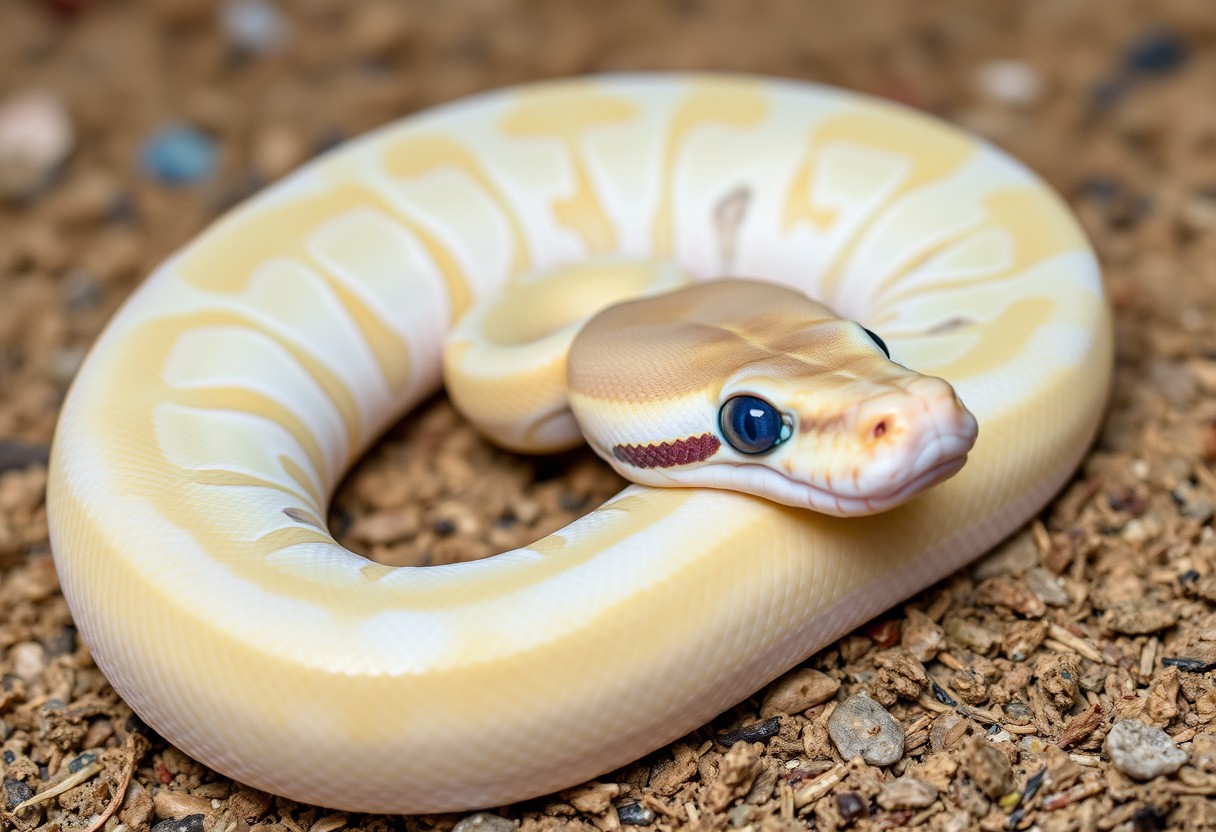
Captivating Social Media Star
Your journey into the world of reptiles isn’t complete without the enchanting Blue Eyed Lucy Ball Python. This morph has made waves on social media, quickly gaining a devoted following due to its striking appearance and friendly demeanor. It’s not just a pet; it’s a captivating presence that resonates with snake enthusiasts and beginners alike, making them a must-have for anyone looking to showcase their unique hobby online.
Popular online
Little did you know that the Blue Eyed Lucy Ball Python has become a sensation across various platforms. Its charming nature and visuals have inspired countless users to share their experiences, creating an engaging community of snake lovers that regularly celebrates this stunning morph.
Eye-catching images
An aspect that sets the Blue Eyed Lucy apart is undoubtedly its stunning visuals. The combination of its vibrant colors and striking blue eyes has made it a frequent subject of striking photographs that capture attention and admiration.
Eyecatching images of the Blue Eyed Lucy Ball Python are not just common; they are iconic. You’ll find that the bright white and yellow contrasts beautifully with its deep blue eyes, producing photos that can draw in anyone, whether or not they are snake enthusiasts. These images often depict the snake in various settings, from natural habitats to beautifully arranged terrariums. They exude a serene yet powerful presence that captivates audiences, making this morph a favorite subject for photographers and social media influencers alike. Sharing these stunning visuals allows you to connect with a broader community and highlight the beauty of these magnificent creatures.

Unique Feeding Behavior
All ball pythons, including the Blue Eyed Lucy, exhibit intriguing feeding behaviors that can enhance your understanding of their habits. These snakes rely heavily on their acute sense of smell to locate prey, often using their tongue to “taste” the air. When hunting, they may employ various hunting techniques, depending on the size and type of their food. This unique behavior not only showcases their adaptability but also reflects their natural instincts, making feeding an imperative aspect of their care in captivity.
Interesting Routine
Clearly, the feeding routine of a Blue Eyed Lucy is a carefully orchestrated behavior. They tend to prefer a consistent schedule, which can be beneficial for both them and you as their keeper. Offering food at the same time each week can help promote feeding enthusiasm and a sense of security for your snake.
Varied Diet
You may be surprised to learn that a Blue Eyed Lucy ball python’s diet can be quite varied. In the wild, they typically consume rodents; however, when caring for them in captivity, it is beneficial to provide a selection of prey that includes different sizes of rats or mice to mimic their natural feeding behavior.
Varied diets are crucial for maintaining the health of your Blue Eyed Lucy ball python. Offering prey items of varying size can promote healthy digestion and prevent obesity. Additionally, introducing occasional treats such as quail or other small mammals can enhance their nutritional intake. However, you should be cautious about overfeeding, as doing so poses a serious risk of metabolic disorders. By ensuring a balanced diet, you can help your snake thrive and promote a long, healthy life.
Strong Instincts
All snakes possess instincts that have been honed over millions of years, and the Blue Eyed Lucy Ball Python is no exception. Its innate behaviors are crucial for survival, aiding in hunting and self-defense. As you observe these remarkable creatures, you’ll appreciate how their instincts are not just automatic responses but also a combination of learned behaviors that enhance their adaptability in various environments.
Natural Hunting Skills
If you’ve ever witnessed a Blue Eyed Lucy in action, you know their hunting skills are nothing short of impressive. They possess a finely-tuned ability to detect movements and scents, making them proficient hunters. Their strategy primarily involves ambushing unsuspecting prey, capitalizing on their natural camouflage and patience.
Alert Senses
Strong instincts are complemented by the Blue Eyed Lucy’s alert senses, which enhance its survival strategies. This ball python has evolved to have acute vision and a keen sense of smell, allowing you to detect even the slightest changes in their environment. You’ll find this heightened awareness imperative for recognizing potential threats or opportunities, proving invaluable for both survival and hunting.
A Blue Eyed Lucy’s alert senses are further augmented by their infrared heat detection, which enables them to sense the body heat of prey, even in complete darkness. This impressive adaptation ensures that you can locate prey effectively, enhancing your hunting success. Additionally, the bluish tint in their eyes can increase sensitivity to light, allowing for greater visibility during twilight hours. However, it’s imperative to understand that while these instincts benefit them, it can also make them wary of sudden movements, which may lead to stress if you’re not cautious. Thus, respecting their space and being mindful of their instincts can lead to a healthier relationship with these beautiful snakes.
Low Allergic Reaction
Many reptile enthusiasts appreciate the low allergic reaction associated with keeping a Blue Eyed Lucy Ball Python. Unlike furry pets, these snakes are less likely to trigger allergic responses in sensitive individuals. This makes them an excellent choice for those who want a snake as a pet without the concern of allergies interfering with your enjoyment and companionship.
Suitable for Many
With their minimal allergenic potential, Blue Eyed Lucy Ball Pythons are suitable for many households. This versatility opens the door for you to enjoy the companionship of a snake, even if someone in your home has a history of allergies. Ensuring a comfortable environment for all leads to a harmonious coexistence.
Minimal Risk
Clearly, the Blue Eyed Lucy Ball Python poses a minimal risk for potential allergic reactions. This quality makes them appealing to a broader audience of pet owners who typically shy away from traditional pets due to allergy concerns.
This minimal risk is largely thanks to their scaled skin and lack of fur, which can harbor allergens. While no pet is entirely hypoallergenic, the Blue Eyed Lucy Ball Python provides a safer alternative for allergy sufferers. By choosing this unique breed, you can enjoy the fascinating world of reptiles while minimizing any unwanted allergic reactions, making your experience more enjoyable and fulfilling.
Thrives in Captivity
Not every snake species can adjust well to life in captivity, but the Blue Eyed Lucy Ball Python truly excels in this environment. With proper care, including the right habitat, temperature, and diet, you can create a thriving environment that mimics their natural habitat, ensuring your snake remains healthy and vibrant.
Adapts easily
An important trait of the Blue Eyed Lucy Ball Python is its remarkable ability to adapt to various conditions. Whether you’re a novice or experienced keeper, you’ll find this species is tolerant of a range of environments, making it easier for you to maintain their habitat without constant adjustment.
Resistant species
Adapts well to various caring conditions, the Blue Eyed Lucy Ball Python has also shown itself to be a resilient species. This resilience makes it less prone to common health issues that can affect other snakes, especially in captivity. This provides a significant advantage for you as a keeper, allowing for better longevity and health in your pet.
For instance, Blue Eyed Lucy Ball Pythons are generally more resistant to respiratory infections and parasites compared to other python species. Their hardy nature means that with the right husbandry practices, they are less likely to succumb to diseases that might afflict less robust species. This resilience enables you to keep a more vibrant and active snake, ensuring that you enjoy a long and fulfilling relationship with your Blue Eyed Lucy.
Color Change Potential
Once again, the Blue Eyed Lucy Ball Python showcases its fascinating color change potential. As these pythons mature, you may notice a gradual transformation in their coloration. Initially vibrant, their hues can shift to softer, more muted tones, which is a hallmark of their unique genetics. This ability to change color adds an intriguing dynamic to their appearance, making them an ever-evolving companion in your reptile collection.
Aging Appearance
Any Blue Eyed Lucy that you care for will exhibit distinctive changes in appearance as it ages. Over time, these snakes may develop a more pronounced contrast between their white and yellow or orange pigments. As a devoted owner, you will appreciate how age brings a richer depth to their coloring, contributing to their overall beauty and becoming a testament to their unique life journey.
Seasonal Shifts
Change is also evident in your Blue Eyed Lucy Ball Python during various seasons. You might observe subtle variations in color intensity influenced by factors like temperature and humidity, which can affect their skin pigmentation. A slight dulling of brightness in winter, followed by a re-emergence of vivid colors in spring, can indeed be anticipated.
This color shift is most noticeable as the seasons transition, with your Blue Eyed Lucy Ball Python showing signs of adaptive coloration. In cooler months, their colors may appear muted, acting as camouflage in their natural habitat. As temperatures rise in spring and summer, your python’s vibrant tones may become more pronounced, reflecting health and vitality. Understanding these *seasonal shifts* can enhance your experience as an owner, allowing you to appreciate the natural beauty and adaptation of your pet throughout the year.
Easy Temperament Adjustments
Many owners find that the Blue Eyed Lucy Ball Python exhibits a remarkably easy temperament, making them a preferred choice for both beginners and experienced reptile keepers. With proper care and handling, these snakes can become calm and tolerant, enhancing your experience as a pet owner. Understanding their behavioral patterns allows you to cater to their needs, ensuring a harmonious relationship with your captivating companion.
Calm Surroundings
Any environment you create for your Blue Eyed Lucy Ball Python should prioritize tranquility. Noise, sudden movements, and erratic light can stress your snake, resulting in defensive behaviors. Ensure that their enclosure is a serene space, minimizing disturbances, and using soft lighting to create a comforting atmosphere. This adjustment in their habitat promotes a more relaxed disposition.
Gradual Handling
Easy handling techniques can significantly affect your Blue Eyed Lucy’s temperament. You should introduce handling gradually to help them acclimate to your touch and presence. Start with short sessions, allowing your snake to feel comfortable in your hands before extending the duration of each interaction. Take care to support their body properly and avoid sudden movements, as they may perceive them as threats. With patience, you’ll find that your snake may become more relaxed and responsive to handling over time.
Handling your Blue Eyed Lucy Ball Python should be a patient and deliberate process. Begin by gently lifting your snake and supporting its entire body to avoid causing any distress. Be aware that sudden movements can trigger a defensive response, so it’s crucial to move smoothly and calmly. Additionally, limit the frequency and length of your early handling sessions to help your snake adjust to your presence without feeling threatened. As their comfort grows, you’ll likely witness their captivating and docile nature emerge, making the bond between you and your snake even more rewarding.
Stunning Morphs Available
Many enthusiasts are captivated by the stunning morphs available in the Blue Eyed Lucy Ball Python. With their striking appearance and unique qualities, these morphs stand out amongst a variety of other ball python options, allowing you to choose one that perfectly fits your aesthetic. Whether you’re a seasoned collector or a beginner in the hobby, the diverse selection of morphs offers something for everyone, making them a popular choice among snake lovers.
Various combinations
You can discover a multitude of mesmerizing morph combinations within the Blue Eyed Lucy lineage. Each pairing can yield varying patterns and colors, offering a range of visual effects that can intrigue any reptile enthusiast. As you explore these combinations, you may find your ideal snake that showcases your favorite traits.
Eye-catching alternatives
You will also find that there are numerous eye-catching alternatives to the Blue Eyed Lucy Ball Python. While their pure white appearance is captivating, you might be drawn to morphs featuring unique colors and patterns, such as the Banana, OD, and Pastel variations. These alternatives can offer exciting visual aesthetics alongside the classic allure of Blue Eyed Lucies.
Combinations of morphs can result in breathtaking color palettes and patterns that make each snake a true work of art. For instance, the Merulk pattern, alongside the Blue Eyed Lucy, creates stunning contrasts that are sure to capture attention. Additionally, with the right breeding practices, you can even create hybrids that showcase extremely rare markings and combinations. Exploring these alternatives not only expands your collection but also enriches your experience as a reptile keeper, allowing you to appreciate the extraordinary diversity within this captivating species.
Educational Value
After acquiring a blue-eyed Lucy ball python, you will discover its incredible educational value. These snakes not only make engaging pets but also serve as fantastic teaching tools about reptile behavior, genetics, and ecology. By observing their characteristics and habits, you can introduce important biological concepts to anyone interested in the animal kingdom and reinforce the significance of biodiversity and conservation.
Teaching Opportunity
Little do many people realize that having a blue-eyed Lucy ball python can create a unique teaching opportunity for both children and adults alike. You can use your python to explain the principles of genetics, as the striking appearance of this morph is a result of specific breeding practices. Engaging with your snake fosters curiosity about the complexities of life sciences.
Children’s Interest
Even young children are captivated by the remarkable appearance of a blue-eyed Lucy ball python. This captivating animal can spark a healthy interest in reptiles and wildlife, encouraging kids to learn more about their behavior and habitat. By being interactive with your snake, you promote a greater appreciation for the natural world.
Plus, when children engage with a blue-eyed Lucy ball python, they often develop a positive attitude toward learning about animals and their environments. This interaction helps demystify snakes, transforming fear into fascination. Because of the snake’s striking white coloration and blue eyes, your child may become a champion for reptile conservation. This connection with wildlife can instill a sense of responsibility toward preserving our planet and its diverse species, ultimately benefiting both your child and the broader ecosystem.
Final Words
So, as you’ve discovered through exploring the 10 unique features of the Blue Eyed Lucy Ball Python, you now possess a deeper understanding of this captivating morph. From their striking appearance to their fascinating genetics, these snakes surely pique your interest as a potential addition to your collection. If you want to learn more about their genetic lineage, check out the Blue Eye Leucistic Complex – Ball Pythons. Embrace your passion for these beautiful creatures as you consider your options in the reptile world!
FAQ
Q: What are the unique color patterns of Blue Eyed Lucy Ball Pythons?
A: Blue Eyed Lucy Ball Pythons are known for their striking appearance, featuring a solid white or off-white background color that is highlighted by their captivating blue eyes. This unique visual characteristic is a result of a genetic mutation that affects melanin production, leading to the lack of typical patterns found in other ball python morphs. Each individual snake may display slight variations, making them uniquely beautiful. The contrast between their white scales and blue eyes makes them one of the most sought-after morphs in the pet trade.
Q: How do Blue Eyed Lucy Ball Pythons differ in temperament compared to other morphs?
A: Blue Eyed Lucy Ball Pythons are generally known to have docile and calm temperaments, similar to other ball pythons. They are often described as friendly and easy to handle, making them excellent pets for both beginners and experienced keepers. Their propensity for a gentle disposition is a key feature, but individual personalities can vary. With regular handling and proper care, these pythons can become accustomed to human interaction, making them less likely to display defensive behaviors.
Q: What are the care requirements for Blue Eyed Lucy Ball Pythons?
A: Caring for a Blue Eyed Lucy Ball Python involves ensuring suitable environmental conditions, including temperature, humidity, and habitat setup. Their enclosure should have a warm side (about 88-92°F) and a cooler side (about 78-80°F) to allow them to thermoregulate. Humidity levels should be maintained between 40-60%, with access to fresh water at all times. A substrate that allows for burrowing, such as aspen or coconut fiber, is also recommended. Regular feeding (typically on appropriately sized rodents) and access to enrichment will help keep them healthy and happy. It’s important to consult a veterinarian familiar with reptiles for any specific health concerns.


